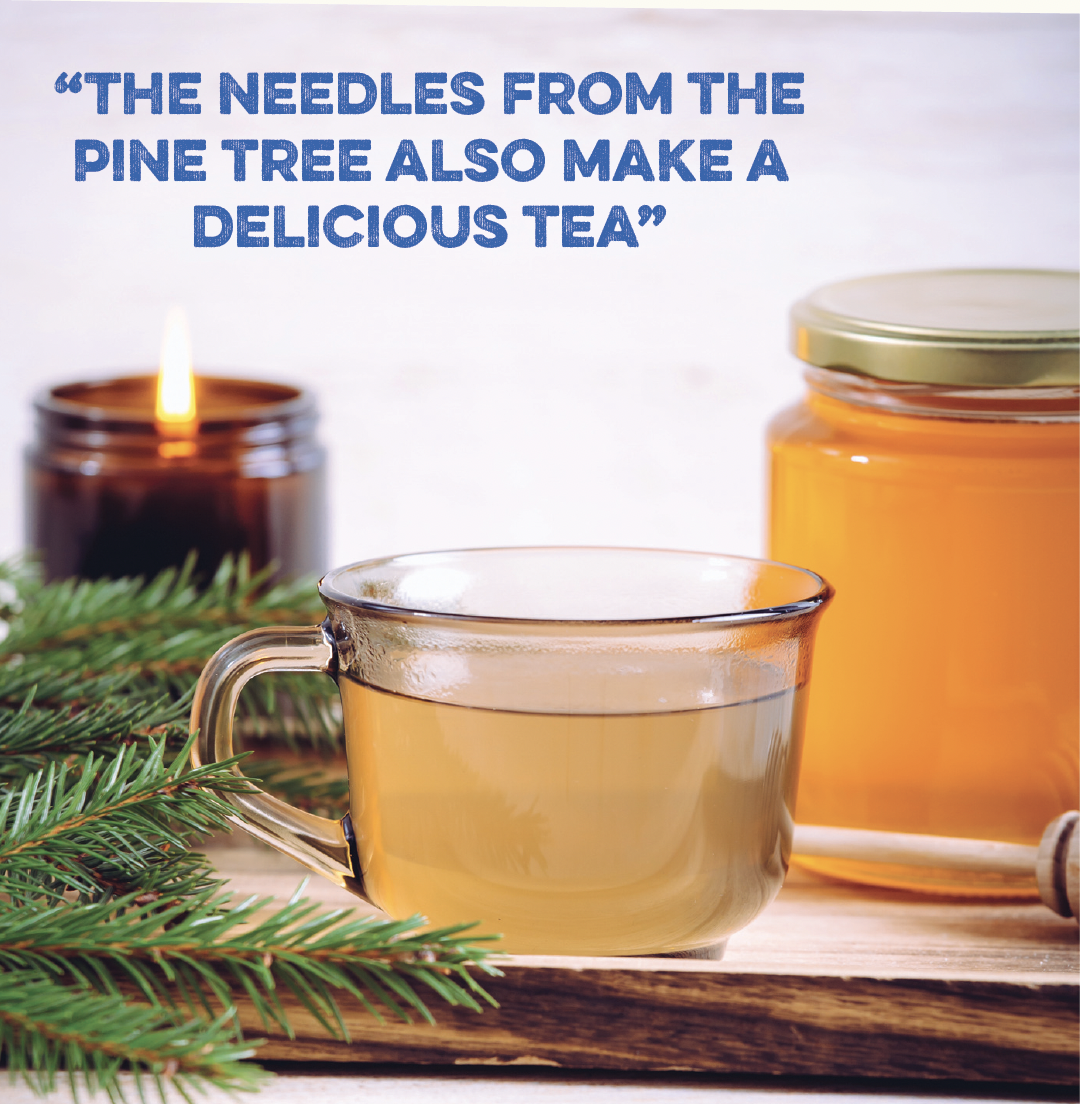
Winter Foraging
by Northern Life
Flu season is upon us and if it seems like every week another cough or sniffle is taking hold, a nutrient boost could well be necessary - a step outside of your door could provide you with a bounty of edible goodness, as long as you know where to look...
Belinda Blake, a nutritional therapist for the Institute for Optimum Nutrition offers her wisdom on finding edible plants that can provide the nourishment needed to get us through the winter months:
Although the hedgerows may be lacking the lushness of leaves, if you’re lucky, there will still be some delicious berries to be had. Among these, you may find some hawthorn berries, sloes and rose hips which can be made into syrups, cordials, teas, jellies and fruit leathers to nourish us through the winter months. These colourful berries contain vitamins and polyphenols which offer valuable immune support to banish colds.
Frost softens the rose hips and makes it possible to squeeze out the sour-sweet pulp, like toothpaste from a tube: a delicious foraging treat which is mouth-tinglingly rich in vitamin C. But take care not to squeeze too hard and receive a mouthful of the irritating hairs from the centre of the fruit! The frost also ‘ripens’ the hard, purple sloes, softening the small, sour fruits so that they are perfect for seeping in gin, where they can begin their slow transformation into the perfect, fruity winter tipple.
During the winter, much of the plant’s energy travels down to the roots as the plant rests. This makes it a good time to harvest dandelion roots, which can be dried and roasted to make a delicious caffeine-free coffee. Burdock roots are identifiable by the tall, dried stems carrying the tenacious seed heads that cling to clothes and are almost impossible to remove from dog hair (no wonder they were the source of inspiration for Velcro). These roots are delicious when fermented (a dish very popular in Asia), and can also bring a mild radishy flavour to salads when used raw.
Remember Dandelion and Burdock? Once a popular drink, the combination has traditionally been used to help support digestive and liver health. However, before you attempt to revive an old favourite recipe, it is important to note that you must ask the landowner’s permission before digging up any plant in the wild (even a weed like the dandelion), but most gardens will provide at least a few dandelions to experiment with.

Whilst it might be tempting to hibernate during these dark months, simply getting out in the fresh air can lift your mood. Taking a winter walk in a coniferous forest also brings other benefits. Trees like pine and spruce produce phytoncides; essential oils which have been shown not only to help lift our mood but also to support immune health and reduce stress hormones. In Japan, ‘forest bathing’, or Shinrin-yoku, is offered on prescription for a range of health conditions, and research coming from this is proving that spending time in nature really is good for your health and wellbeing.
The needles from the pine tree also make a delicious tea, and are rich in vitamin C and polyphenols, which may help to stave off or soothe a cold. The needles are also wonderful infused in Epsom salts and added to a hot bath for a forest-bathing aromatherapy experience in the comfort of your own home. As we move into early spring, look out for the tender new lime-green tips of the fir tree, which carry a distinctively citrus flavour reminiscent of grapefruit, and are delicious infused in honey. As with all plants however, always be 100% sure that you know what you are picking and take care not confuse these edible coniferous leaves with those of the yew, which are highly poisonous.
Even in the depths of winter, you can still find some fresh greens, and tucked away in the hedgerows you may see new green growth pushing up through the fallen, frosty leaves. The tiny leaves of chickweed, tender baby dandelion, garlic mustard and smooth sow thistle leaves all provide a fresh, flavoursome addition to winter salads and soups, as well as a blast of welcome vitamins and minerals. Where stinging nettles have been cut down, new growth will appear throughout the year. Select the tender bright green leaves from the tops of the plant which look vibrant and full of energy. Rich in iron and other minerals, these leaves can be wilted and used as a replacement for spinach in recipes, pounded into pesto, made into a warming and nutritious soup that will keep you warm throughout the winter months.
Always check the Foraging Code for full details on safe foraging and to ensure you comply with the law. Some wild food may not be suitable for pregnant or lactating women, or those with specific health problems, so always take advice before trying a new food or herb.
Read more: ion.ac.uk/nutrition




